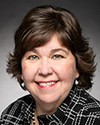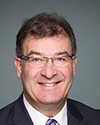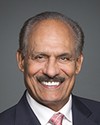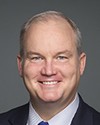There are a number of issues under the OPP that benefit the Arctic.
As the commissioner mentioned, the first one is the extension of the season. Last year we were out there for 35 more sea days. We intend to increase that by another 10 sea days in the next few years, basically showing up there a few weeks earlier in the spring and June and leaving a few weeks later in November. That's a major one, because more and more the resupply ships are there at the ice edge earlier, and they want to start resupplying. Obviously, they need to adjust depending on the ice conditions, but we make it our responsibility to make sure we're there to support them.
Another initiative is around the Coast Guard Auxiliary. We created a Coast Guard Auxiliary chapter in the Arctic. To give some context, throughout Canada the auxiliary has about 4,000 members, and about 1,100 units. In the Arctic right now we are at 15, we're going to be expanding with another five next year, and we have about 200 members. We're working really hard to expand that. We're going to increase the role of the auxiliary as well. Right now it's focused on search and rescue, and we provide training and everything else, but we want them to be part of the emergency response. If there's any pollution, they're on the ground, they're right in the community, so we can draw from their presence. Again, we'll provide training around that.
This year we also opened the first inshore rescue boat station in Rankin Inlet. That's a program we've had down south for many years. We hire students to deliver the search and rescue services. It's a very successful story in Rankin. We canvassed the 45 communities up north and did some risk assessment, and determined Rankin to be the best location. Also, we recruited from colleges and we had indigenous youth minding that station this summer. They just ended the operation last week.
The final one I want to touch on is the operational network. It's little known but the marine communications and traffic services centre in Iqaluit monitors the entire Arctic. This is where people report for NORDREG, ask for ice information and so on. We have dedicated, professional people at the centre who provide information and monitor the activities. We upgraded all the centres, and we have 11 communication towers throughout the Arctic that they use. Now we're upgrading the links between those towers to make sure we use state-of-the-art technology to ensure reliable communications networks, plus a business continuity plan.
These are all parts of investment for the Arctic.




